Okja, the new film from visionary director Bong Joon-ho, is packed with incredible detail. From the film’s world-building to its cast of characters, director Bong brings his attention to every aspect of Okja’s filmmaking, thus elevating its scope and ambition.
One of these key elements is Okja’s smart, straightforward and memorable costume design. For the film, director Bong enlisted two teams to oversee the film’s costumes — one for the Korean cast, led by Choi Seyeon (who previously worked with director Bong on 2009 mystery Mother) and the other for the American cast, led by Catherine George. Despite these two separate teams, Okja’s costuming is extremely cohesive and serves to tell one unified story. This is never more apparent than in the costumes of the film’s protagonist and heroine Mija (An Seo-hyun) and primary villainess, Lucy Mirando (Tilda Swinton).
The juxtaposition between these two opposing characters through costume design is done in a unique way — Mija and Lucy are given colour palettes from the same family (red and pink) and in key scenes wear similar costumes.
Traditionally, filmmakers and costume designers communicate difference and characters with opposing motivations in contrasting colour palettes; villains in black and heroes in white, for example. In Okja, differences are only ever communicated through the context and environments in which Mija and Lucy’s costumes appear. And once they do, these costumes end up assisting director Bong’s story and help to emphasise some of the film’s major themes.
The ‘Rebellious Red’ of Mija

When we first meet Mija, she is in a purple jacket, wine-coloured top and dark red pants. We are introduced to her carefree rural life in the mountains of South Korea, where she lives with her grandfather (Byun Hee-bong) and Okja. Okja is the ‘super pig’ entrusted to her farmer grandfather by the Mirando Corporation who have asked that he raise the super pig for ten years, before they take her back. The purple and red combination continues with a purple jacket and pink pants when Dr Johnny Wilcox (Jake Gyllenhaal) and the team from Mirando arrive.
When Mija finds out she has been lied to by her grandfather, and that Mirando has reclaimed Okja, Mija embarks on a mission to reunite with her best friend. The red and purple colour palette of Mija’s that we are first introduced to is now reversed when she suits up in a bright red jacket and magenta pants to head to Seoul.
The reversal of her colours are symbolic because, for the first time in her young life, Mija has been grievously lied to. Her hope, innocence and trusting nature will continue to be shaken throughout the story as she witnesses the unscrupulous and cruel nature of the Mirando Corporation, and even the white lies of the Animal Liberation Front (ALF).

Visually of course, Mija in bright red helps her to stand out. When Mija arrives in Seoul for the first time, she is seen as a lone figure in red moving against the current of office workers in black. As the story shifts to an urban environment, Mija becomes a symbol of the anti-establishment as she tears through Seoul and New York City to reunite with Okja.
Mija‘s red also contrasts with the blacks of the ALF and for good reason. Though the ALF is depicted as the rebel organisation fighting against the ‘evil’ Mirando Corporation with its guerrilla tactics, Mija is positioned as the true figure fighting against the establishment. While their intentions are rooted in a good place, their willingness to compromise Okja and lie to Mija paint them as figures whose actions need criticism as well.
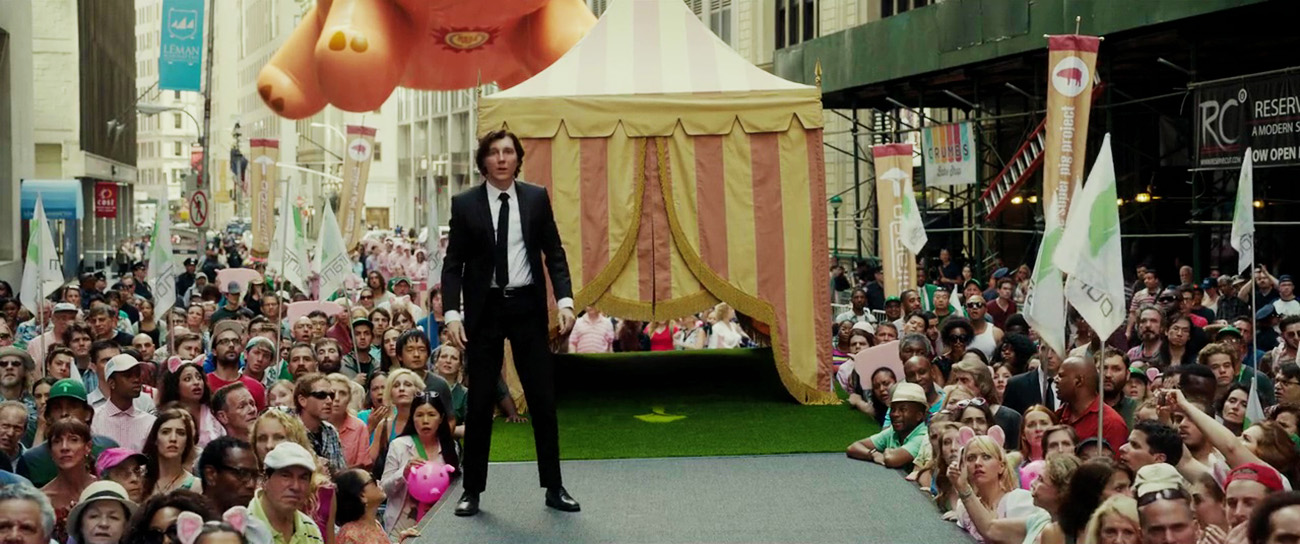
ALF leader Jay (Paul Dano) is especially interesting in that his signature look is that of a black suit and tie — attire one would associate with the very establishment he and his team are fighting against. Costume designer Catherine George notes that while “Jay takes the mission very seriously and wants to portray that through his clothes”, doing so also reveals a character of contradictions. While he is a complicated character, in that he is sincere to Mija and dedicated to his cause, Jay also possesses an underlying sinister nature. Jay is unafraid of being cruel to keep his team in line and will do anything, including harming Okja, to ensure the success of his mission.
Mija therefore is the true figure of anti-establishment in the film because unlike her ALF allies — including ALF’s only female member who ironically goes by Red (Lily Collins) — Mija has no code or no uniform to adhere to. With her unapologetically bold red jacket, purple pants and green fanny pack, Mija’s clashing colours emphasise her character as one with no pretences or hidden agendas. She is innocent, straightforward, bold, brave and honest — Mija’s only desire is to protect Okja at all costs. Like another famous rebel of cinematic history before her, Mija is declarative in her red jacket, but this time, our hero has a cause.
The ‘Piggy Pinks’ of Lucy Mirando
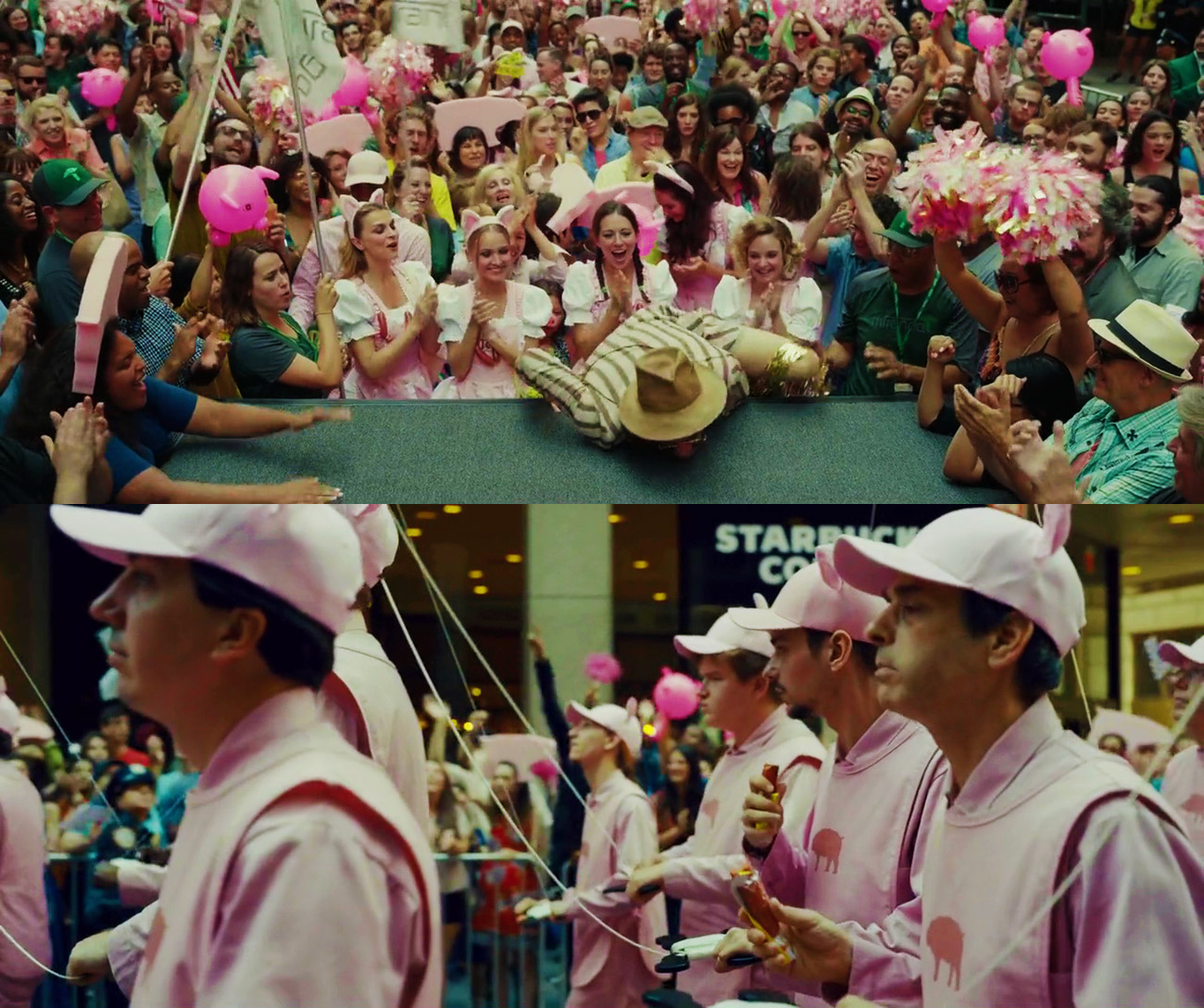
If Mija’s colour is rebellious red, then Lucy Mirando’s signature colour is, as George fondly describes in interviews, ‘piggy pink’. In many ways, Lucy Mirando reminds one of another pink-clad villain before her — Dolores Umbridge from the Harry Potter series. Like Lucy, Umbridge is another sinister figure of the establishment who lies and manipulates the public and favours pink.
Pink in Okja can be interpreted as a symbol of the capitalist and oppressive structures that threaten the freedom of Okja, Mija and what the ALF is fighting against. This is satirically visualised in the ridiculous ‘Piggy Parade’ scene where hundreds of Mirando Corporation’s followers and employees are dressed in pink; with some even even wearing sausage necklaces. But the use of pink in Okja‘s costume design also goes beyond its visual association with capitalism.
As a colour, pink is viewed as the universal shade for femininity but this perception has its roots as a societal and capitalist construct. The Smithsonian details that until about the 1940s, pink was associated with male children — as a derivative of red, it was considered ‘stronger’, and therefore, was perceived as a more masculine colour. It was only post-WW2 when capitalism boomed in the United States that corporate America decided pink and blue needed to be gendered colours to sell products. So what does this mean for Lucy Mirando?

In Okja, Lucy’s pinks are non-threatening and almost infantile, unlike the aggressive qualities found in Dolores Umbridge’s cerise pink. It is a calculated choice meant to paint her as a traditionally feminine figure.
Lucy’s motives are to revamp and soften Mirando’s rotten image as the most hated agrochemical conglomerate in the world, so she starts with herself. She dresses herself in soft, feminine pink and gets braces to achieve exaggeratedly straight white teeth— the kind of teeth that American capitalism embraces.
She constructs an image of wholesome, traditional, ‘approachable femininity’ with her skirts and flouncy fabrics. Just as femininity is a socio-capitalist construct, Lucy’s image of ‘approachable femininity’ underlies a sinister agenda that is timely when one recalls another heiress of a dastardly dynasty. George mentions having looked at several female CEOs to establish the look of Lucy, but for Tilda Swinton, Ivanka Trump stood out as an obvious inspiration. The image of Ivanka with pin straight hair, perfect white teeth in a blush pink dress from her own line is eerily similar to Swinton’s Lucy Mirando image.
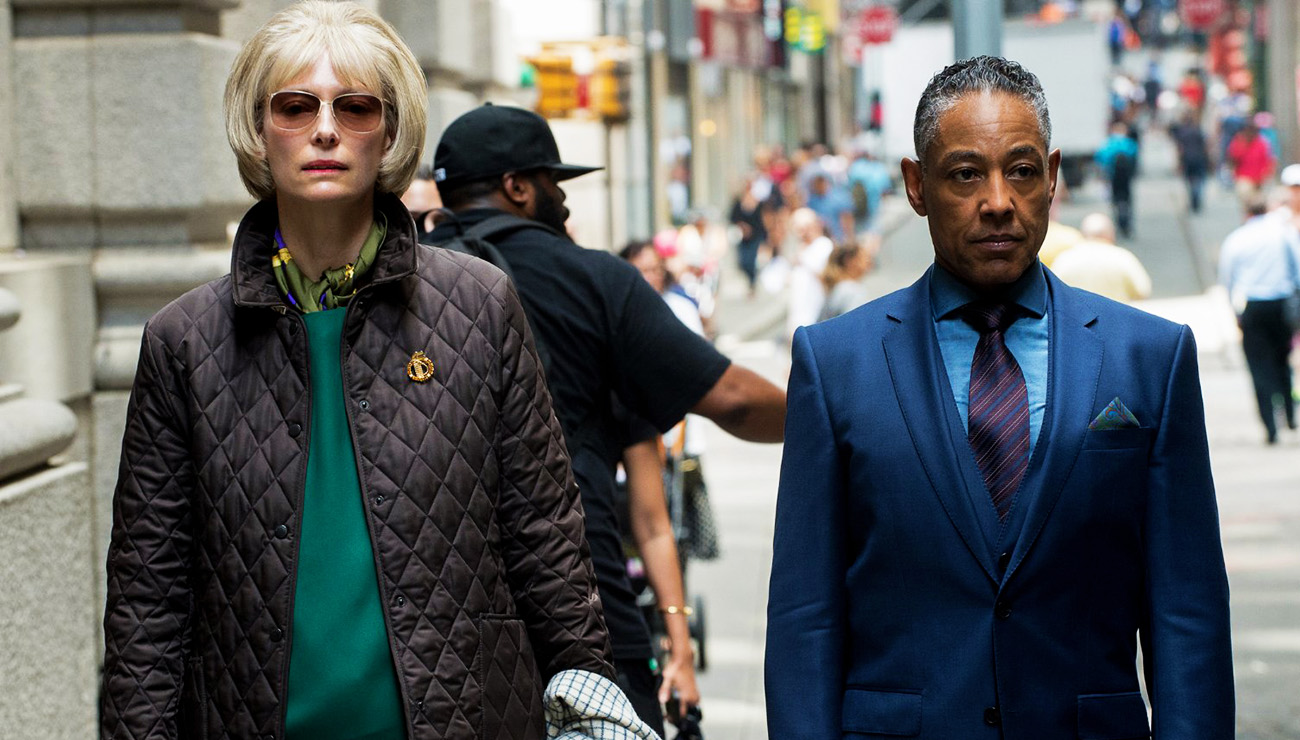
The socio-capitalist constructs behind femininity and masculinity are again reinforced through visual contrast — this time with Lucy and her twin sister Nancy. Nancy is one of the few remaining symbols of her “psychopath” grandfather and father, and she is coded as the visual opposite of Lucy. Nancy is a more obvious symbol of the white male capitalist establishment — she smokes, is dressed in more ‘masculine’ teals and greys that tie her to her right hand man Frank (Giancarlo Esposito) and her green, blue and gold scarf is a nod to the suit-tie combination and Mirando’s colours.
Nancy’s presence as a masculine figure undermines Lucy’s authority, as do the men in her organisation. Frank’s covert reports to Nancy and Dr Johnny Wilcox’s condescending attitude towards Lucy (referring to her as a “little lady”) show how the male characters do not respect Lucy. Though Lucy could have been the single ‘Big Bad’ of the film, Nancy’s presence is a signifier that white male authority will always be threatened by female power, as Nancy aligns herself with the men who seek to overthrow Lucy. Lucy uses her femininity to paint a new, pretty image for Mirando, but femininity is a double-edged sword in our patriarchal society. Director Bong tackles this by making us understand that Lucy was a product of both her own choices and of society, and she is a rather pathetic figure by film’s end.
Traditionalism vs Individualism

For all their differences, Lucy and Mija initially share somewhat similar character motivations. One of Okja‘s major themes focuses on the rejection of tradition in favour of the individual’s desires. In the case of Lucy and Mija, both characters dismiss traditional ‘values’ and begin to forge their own paths in unique ways.
At the ‘Piggy Parade’, Lucy wears a pink dress that is a nod to the traditional Korean hanbok. Taken from the Chanel 2016 Cruise collection, the Chanel design is modified for the film and features a ‘Mirando green’ belt. In the context of Lucy, the Chanel dress she wears turns what is meant to be a tribute to traditional Korean culture into a symbol of corporate America capitalising on other cultures to market a global image. It is therefore ironic that for all of Lucy’s efforts to fight against her family’s legacy and traditions — to assert her own sense of individuality within the confines of her corporation — she too has to succumb to deceit and cruelty in order to fashion Mirando’s ‘new’ image.
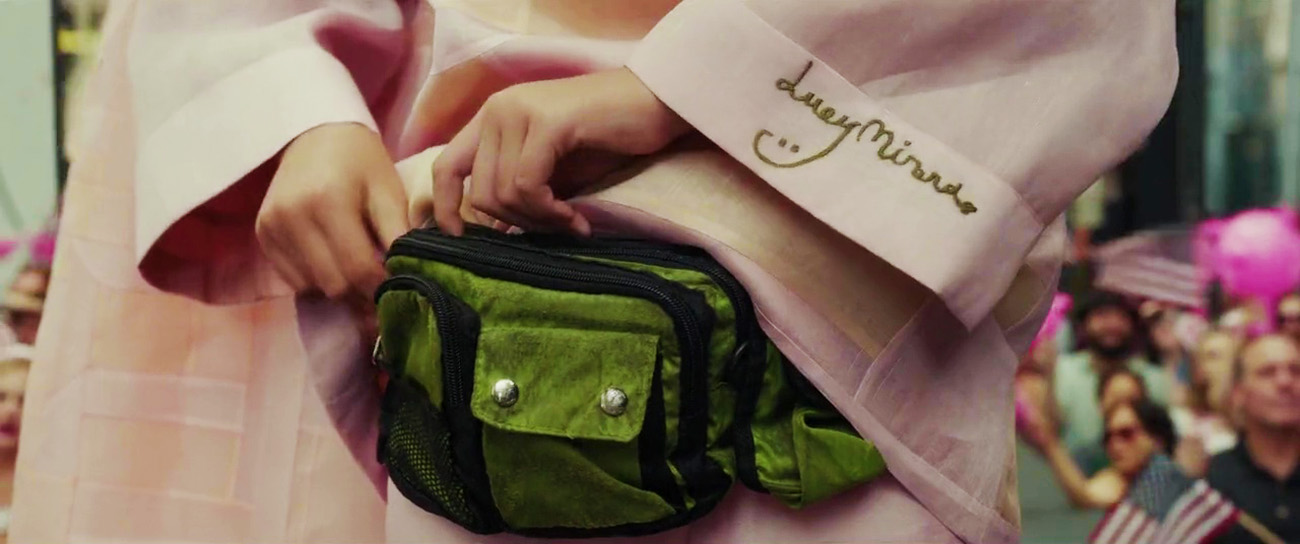
Mija on the other hand is forced to wear a mini version of Lucy’s pink dress but in that same outfit asserts her individuality much differently. Mija’s green fanny pack, concealed under her hanbok top from the ‘Piggy Parade’ all the way into the slaughterhouse, eventually reveals itself to be the key to Okja’s freedom. Once again, the costume design of Okja uses colours that belong to both its protagonist and antagonist and subverts its meaning in the context of the other character.
The green fanny pack contains the golden pig Mija’s grandfather bought — symbolic of his belief that Mija no longer needed Okja but instead had to begin thinking about marriage the way a normal girl would. In many ways, the sins of the father(s) are what set up the motivations and actions for the two female leads. Mija trading the golden pig for Okja’s freedom indicates her rejection of the path laid out for her by her grandfather and her desire to live a life with Okja.
Rebirth
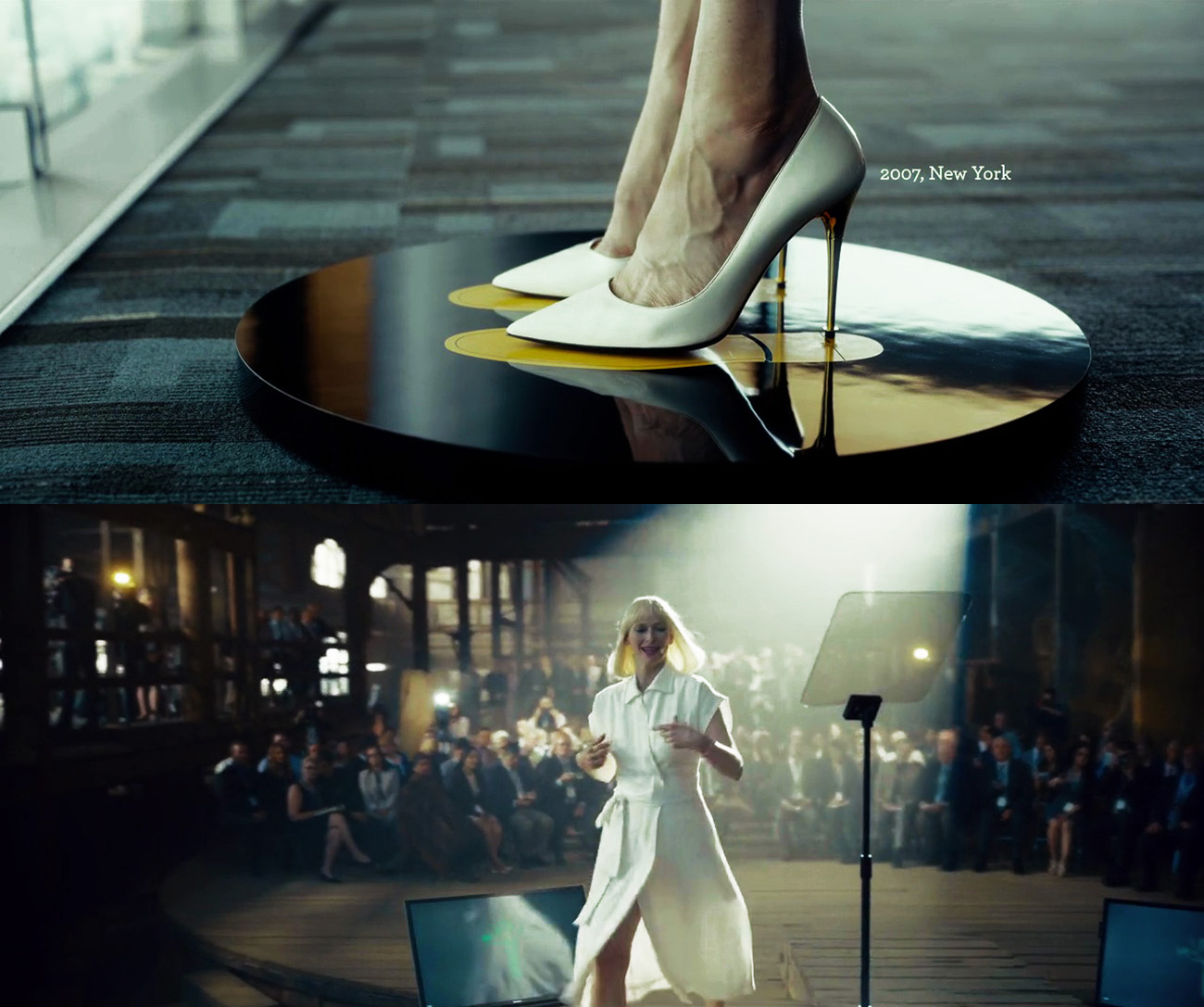
The similarities between Lucy and Mija’s costuming don’t end there. The first shot of the entire film is of Lucy’s white stilettos from Tom Ford. Her stilletos distinctly feature a gold heel which costume designer Catherine George notes is meant to echo the golden pig that Mija’s grandfather later gifts to his granddaughter.
In this opening scene, Lucy has coded herself as a symbol of rebirth for the Mirando Corporation. To align with Mirando’s new, eco-friendly image, she is in a flowing, robe-like white dress. She is an eco-angel, a vision of purity hallowed in the spotlight. But we instantly know how false this image really is because the sight of white stilettos parading around a factory built on blood money is enough to force the viewer to question its genuineness. Okja is after all, also a story about man’s relation to the environment. Lucy is therefore a false symbol of rebirth and change.
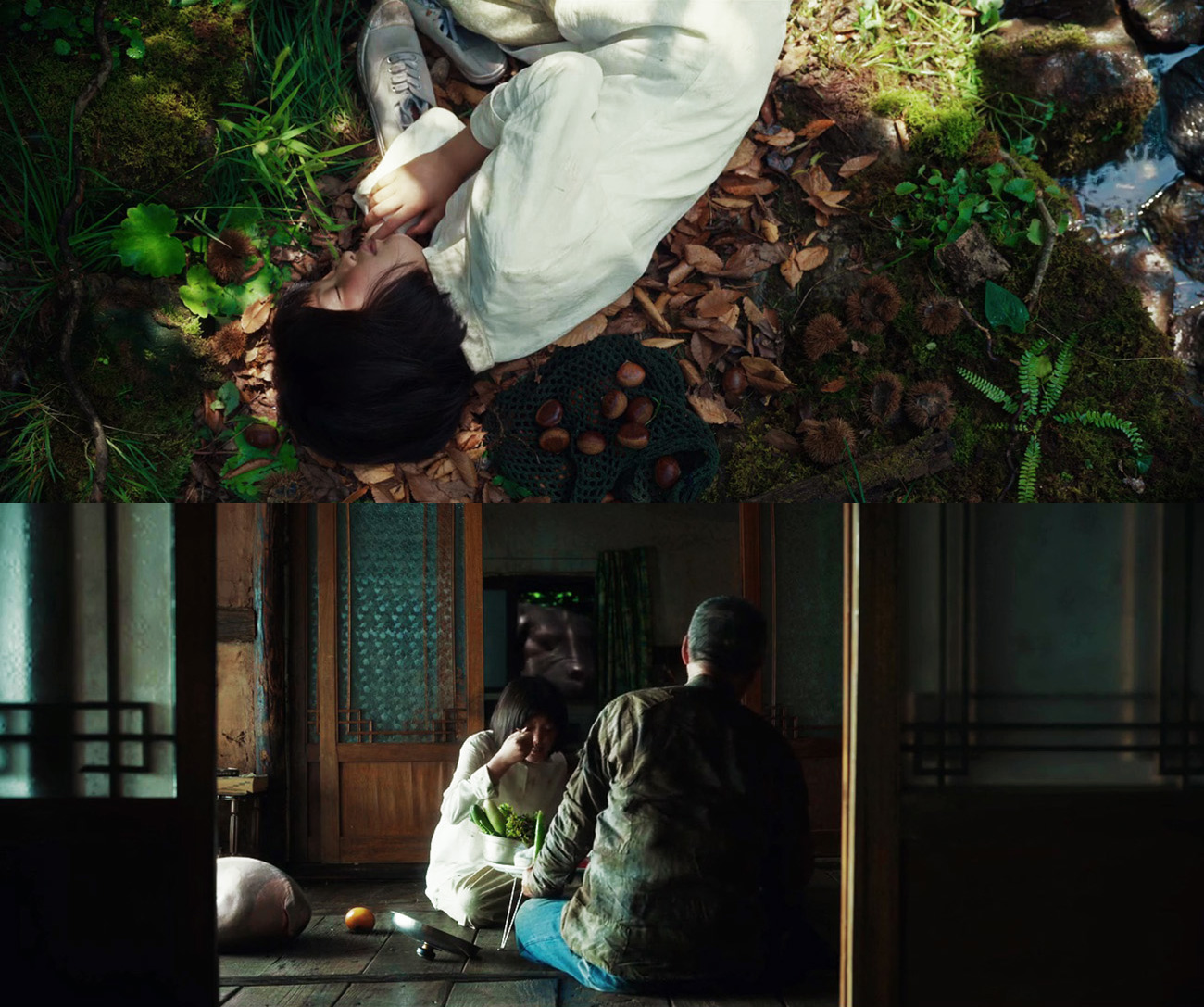
Conversely, director Bong and costume designer Choi Seyeon bring things to a visual full circle by closing the film with Mija in a loose white shirt, as opposed to her usual red and purple. Once again, they use similar costumes between Lucy and Mija to highlight the contrast between the two characters and what they stand for.
The sight of Mija surrounded by nature in a bed of leaves curled in a fetal position also positions her as a symbol of rebirth. In a way, her journey to reunite with Okja is also representative of Mija’s own coming-of-age — she is no longer innocent to the greed and corruption of the adult world, but she is not fundamentally changed or embittered. She has fought and survived. Her white shirt is her own symbol of rebirth, but she also represents hope in the context of her environment as we witness her, and the new baby super pig she has rescued with Okja, flourish.
Costume design as commentary
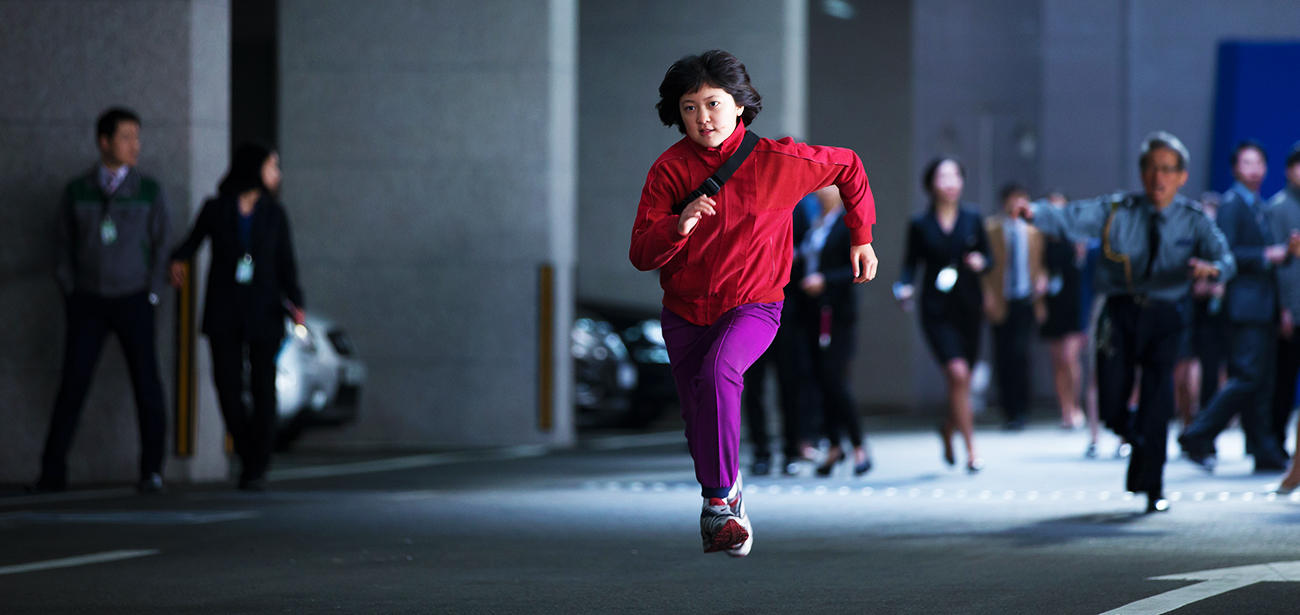
Okja‘s use of costuming is clever in that it goes well beyond what many filmmakers use costuming for — as a tool to deepen the audience’s understanding of a character. Bong, together with his costuming team in Choi and George, demonstrate how in addition to characterisation, costuming can also be used to further a film’s use of social commentary. In Okja‘s case, the colours assigned to its costumes and the various outfits we see in the film, all help director Bong in his critique of capitalism, individualism, environmentalism and activism.
This is partly what makes Okja a fully-rounded and fun piece of socially conscious storytelling. Despite director Bong’s cynicism — where the filmmaker calls out our callous post-capitalist culture — at its heart, Okja possesses a deep sense of humanism and hope. Because for all the Mirando Corporations in the world and the oppressive capitalist structures they represent, there may just be a new generation of plucky young rebels waiting to stand up for what’s right.
